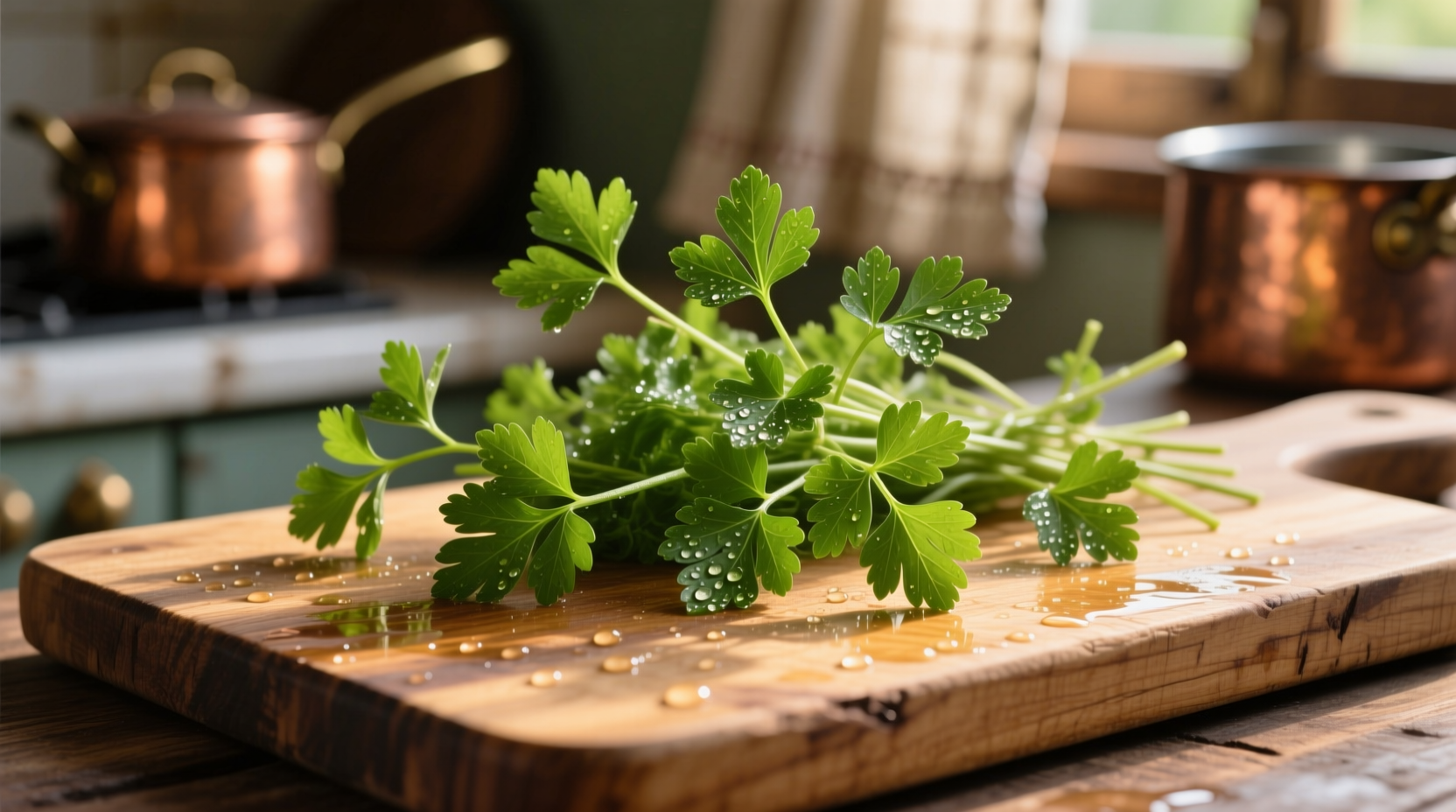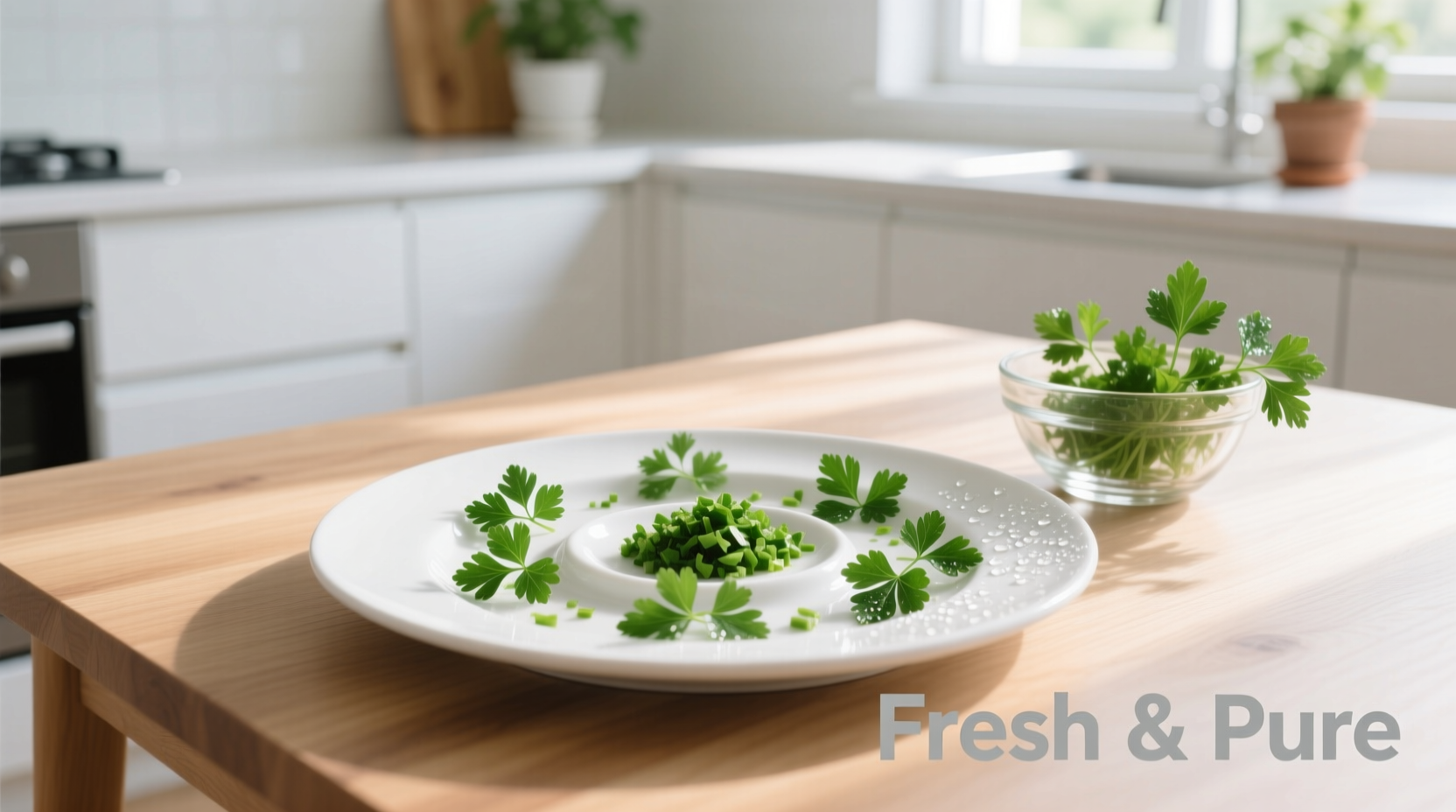Parsley isn't just a garnish—it's the star ingredient in dozens of globally celebrated dishes, from Middle Eastern tabbouleh to Italian gremolata. This versatile herb delivers fresh, grassy flavor and essential nutrients when used generously in cooking, transforming simple ingredients into vibrant meals that showcase its culinary potential beyond mere decoration.
For home cooks wondering how to move parsley from plate decoration to main ingredient, you're in the right place. This guide reveals practical techniques professional chefs use to maximize parsley's flavor potential across multiple cuisines. We'll explore why this humble herb deserves center stage in your cooking repertoire and how to incorporate it into everyday meals for maximum taste and nutritional impact.
Why Parsley Deserves More Than Garnish Duty
Most home cooks underutilize parsley, relegating it to a last-minute plate decoration. But culinary professionals recognize two distinct varieties with unique applications: flat-leaf (Italian) parsley offers robust flavor ideal for cooking, while curly parsley provides bright freshness best preserved when added at the end of preparation. Understanding these differences transforms how you approach parsley dishes.
The USDA National Nutrient Database confirms parsley's impressive nutritional profile—just one cup of chopped parsley delivers over 100% of your daily vitamin K requirement, 105% of vitamin C, and significant vitamin A. This nutritional powerhouse also contains apigenin, a compound studied for its potential anti-inflammatory properties according to research published in the Journal of Agricultural and Food Chemistry.
Classic Parsley-Centric Dishes Across Global Cuisines
Traditional cooking traditions worldwide showcase parsley as a primary ingredient rather than afterthought. Mediterranean cuisines particularly excel at featuring parsley prominently:
- Tabbouleh (Lebanon): This refreshing salad contains up to 80% parsley and mint, with bulgur wheat playing a supporting role
- Gremolata (Italy): The classic veal osso buco accompaniment combines equal parts parsley, lemon zest, and garlic
- Chimichurri (Argentina): While often parsley-cilantro blends exist, authentic versions use flat-leaf parsley as the dominant herb
- Salsa Verde (Italy): A vibrant sauce where parsley comprises 60% of the herb content, blended with capers and anchovies
| Parsley Variety | Best Culinary Applications | Flavor Profile | Storage Duration |
|---|---|---|---|
| Flat-leaf (Italian) | Cooking, sauces, marinades | Bold, slightly peppery | 10-14 days refrigerated |
| Curly parsley | Garnishes, finishing touches | Milder, fresher | 7-10 days refrigerated |
| Japanese parsley (Mitsuba) | Asian dishes, soups | Celery-like, delicate | 5-7 days refrigerated |
Modern Techniques for Maximizing Parsley Flavor
Professional chefs employ specific methods to extract maximum flavor from parsley while preserving its vibrant color and nutritional value:
Proper Washing and Drying
Remove field sand by soaking parsley in cold water with a splash of vinegar for 10 minutes, then spin dry in a salad spinner. Properly dried parsley prevents dilution of flavors in sauces and ensures better adhesion of seasonings.
Strategic Stem Usage
Don't discard stems! Finely chop tender upper stems and incorporate them into dishes—they contain concentrated flavor compounds. Reserve thicker stems for flavoring stocks, as recommended by the American Culinary Federation's herb handling guidelines.
Temperature Control
Add flat-leaf parsley early in cooking for infused flavor in soups and stews, but introduce curly parsley during the final minute of preparation to preserve its bright flavor and color. This technique aligns with flavor compound research from the Culinary Institute of America's herb chemistry studies.

Nutritionist-Approved Parsley Preparation Methods
To preserve parsley's impressive nutrient profile, registered dietitians recommend these evidence-based approaches:
- Raw consumption: Enjoy maximum vitamin C retention in tabbouleh or chimichurri
- Quick blanching: Preserves color and nutrients while reducing bitterness in larger quantities
- Cold-infused oils: Extract flavor without heat degradation for dressings and marinades
- Room temperature storage: Keeps parsley viable longer than refrigeration according to University of California agricultural studies
Seasonal Pairing Guide for Parsley Dishes
Parsley's versatility shines across seasons when paired thoughtfully with complementary ingredients:
Spring Pairings
Combine with asparagus, morel mushrooms, and lemon for bright, fresh dishes. Try a parsley-asparagus risotto where parsley replaces half the traditional basil for a more nuanced flavor profile.
Summer Applications
Create vibrant cold soups like Persian abgoosht where parsley forms the green base alongside cucumbers and yogurt. The herb's cooling properties make it ideal for hot weather dining.
Autumn Integration
Add to root vegetable roasts—toss carrots, parsnips, and beets with olive oil, garlic, and generous amounts of flat-leaf parsley before roasting for an earthy, herbaceous side dish.
Winter Uses
Incorporate into hearty bean stews and braises where its flavor withstands long cooking times. Add during the last 15 minutes of preparation to preserve freshness in winter comfort foods.
Three Essential Parsley Recipes to Transform Your Cooking
Lebanese Tabbouleh (Authentic Version)
Ingredients: 2 cups finely chopped flat-leaf parsley, 1/2 cup mint, 1/4 cup bulgur wheat (soaked), 4 green onions, 1/4 cup olive oil, juice of 2 lemons, salt to taste
Method: Soak bulgur in cold water for 30 minutes, then drain thoroughly. Finely chop parsley and mint (stems included). Combine all ingredients, seasoning gradually. Refrigerate 2 hours before serving to allow flavors to meld. Authentic tabbouleh should be predominantly parsley—not bulgur-heavy as commonly misrepresented in Western versions.
Parsley Pesto (Without Basil)
Ingredients: 2 cups flat-leaf parsley, 1/2 cup walnuts, 2 garlic cloves, 1/2 cup pecorino cheese, 1/2 cup olive oil, juice of 1/2 lemon
Method: Toast walnuts lightly. Blend garlic first, then add parsley and walnuts. Slowly incorporate olive oil while blending. Finish with cheese and lemon juice. This vibrant green sauce works beautifully with fish, roasted vegetables, or as a sandwich spread.
Parsley and White Bean Soup
Ingredients: 1 bunch curly parsley, 2 cans cannellini beans, 1 onion, 2 carrots, 3 celery stalks, 6 cups vegetable broth, 2 garlic cloves, 2 tbsp olive oil
Method: Sauté vegetables in olive oil until softened. Add broth and beans, simmer 20 minutes. Stir in coarsely chopped parsley stems during last 10 minutes. Add leafy portions during final minute. The dual addition of stems and leaves creates layered parsley flavor throughout the soup.
Common Mistakes to Avoid with Parsley Dishes
Even experienced cooks make these parsley preparation errors that diminish flavor and nutritional value:
- Overcooking curly parsley: Destroys its delicate flavor compounds—always add during final minute
- Using dried parsley as substitute: Dried parsley loses 90% of its volatile flavor compounds—fresh is essential
- Improper storage: Keeping parsley in airtight containers accelerates wilting—store stems in water like flowers
- Washing right before use: Moisture promotes spoilage—wash immediately after purchase and dry thoroughly
Expanding Your Parsley Culinary Repertoire
Once comfortable with traditional preparations, experiment with these innovative applications:
- Create parsley-infused olive oil by gently heating oil with parsley stems (not leaves) for 20 minutes
- Make parsley compound butter for immediate flavor enhancement of grilled proteins
- Blend parsley into smoothies for nutrient density without overpowering flavor
- Use as pizza topping after baking for fresh contrast to cooked ingredients
Remember that parsley's flavor profile complements citrus, garlic, olive oil, and acidic ingredients particularly well. When developing your own parsley dishes, start with these foundational pairings before branching into more complex combinations.











 浙公网安备
33010002000092号
浙公网安备
33010002000092号 浙B2-20120091-4
浙B2-20120091-4